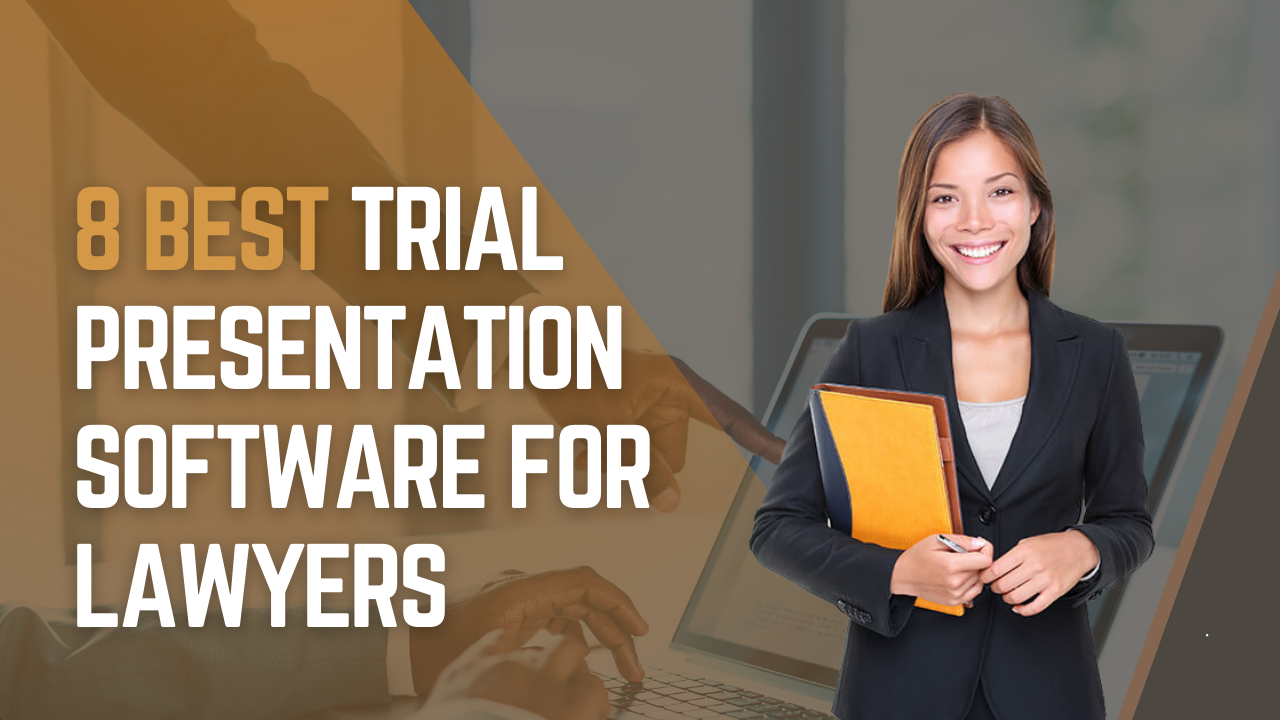Why Your Following Instance Demands a Solid Trial Presentation: Insights and Techniques for Attorneys
Why Your Following Instance Demands a Solid Trial Presentation: Insights and Techniques for Attorneys
Blog Article
Navigating the Complexities of Test Presentations: Tips for Seamless Distribution and Engaging Arguments
In the realm of legal process, the art of test presentation stands as a vital component of success. As attorneys navigate the detailed web of court room dynamics, the capacity to seamlessly provide disagreements and proof while captivating the court's focus comes to be critical. The intricacies fundamental in trial presentations call for a delicate balance of skill, approach, and finesse. By honing methods that make sure a sleek distribution and crafting compelling disagreements that reverberate with the audience, attorneys can substantially improve their campaigning for. In a globe where persuasion reigns supreme, grasping the intricacies of test presentations is not merely a choice but a need for those seeking to dominate in the court room.

Understanding Trial Goals
To successfully browse a trial, it is crucial to have a clear understanding of the goals that require to be accomplished. Before entering the court, legal teams must define their objectives and wanted outcomes. These goals function as assisting principles throughout the test, shaping techniques and affecting decision-making processes.
Recognizing trial goals involves an extensive analysis of the case, lawful precedents, and the client's ideal passions. Trial Presentations. It needs a precise examination of the truths, determining crucial issues, and preparing for prospective obstacles. By setting certain and quantifiable goals, attorneys can customize their disagreements and presentations to line up with the desired results
In addition, a clear grasp of test goals allows legal teams to focus on proof, witnesses, and legal arguments properly. It permits the development of a coherent story that reverberates with the discretionary, strengthening the overall situation presentation.

Organizing Proof Effectively
Having a clear understanding of test objectives lays the structure for arranging proof successfully in lawful process. By aligning the presentation of proof with the desired results of the trial, legal teams can enhance their disagreements and boost their persuasiveness.
Another trick aspect in arranging evidence effectively is developing a sensible flow. Presenting proof in a sequential and coherent manner can aid build a compelling story that supports the lawful debates being made. Additionally, using visual help such as timelines, graphs, or charts can additionally improve the company of evidence and aid in clearing up complex connections or series of events.
Moreover, ensuring that all proof provided is permissible and pertinent to the instance is necessary. Inadmissible or unimportant evidence can detract from the toughness of the argument and possibly harm the integrity of the offering party. A precise evaluation and choice procedure should be carried out to include only the most impactful and legitimately sound proof in the test discussion.
Crafting Influential Stories
Crafting engaging stories plays an essential role in providing influential disagreements throughout lawful process. When building a narrative for a trial check my source discussion, it is necessary to establish a clear story that highlights crucial factors and links them in a systematic fashion. By weaving with each other proof, testimony, and lawful debates right into a influential and cohesive story, lawful experts can effectively promote for their clients and enhance the likelihood of a beneficial outcome in the courtroom.
Grasping Aesthetic Aids
Reliable usage of aesthetic aids is vital to improving the effect and quality of test discussions. Aesthetic help, when used tactically, have the power to streamline complicated details, strengthen bottom lines, and leave a long-term perception on the court and court. To understand visual help in trial presentations, it is important to make certain that they are clear, succinct, and pertinent to the disagreements being made.
When incorporating visual help, such as charts, photos, graphs, or timelines, right into a informative post trial presentation, it is important to keep them aesthetically appealing yet professional. The visuals need to complement the spoken disagreements, offering a visual depiction of the info being talked about without frustrating the target market with unnecessary details.
Furthermore, exercising with the dig this visual aids in advance is necessary to ensure a seamless shipment during the test. Acquainting oneself with the material, shifts, and timings of each visual help can aid preserve the circulation of the presentation and stop technical glitches that might emerge.
Delivering Impactful Closing Arguments
A compelling closing debate serves as the culmination of a trial presentation, encapsulating the core narrative and encouraging the discretionary towards a favorable choice. To deliver an impactful closing debate, it is important to succinctly recap key points, highlight the staminas of your situation, and deal with any weaknesses in a critical manner. Begin by describing the main arguments that support your client's placement, emphasizing why the evidence presented throughout the test supports your story. It is vital to create a feeling of communication and quality, assisting the discretionary towards the desired verdict.
Furthermore, integrating emotional allure can better reinforce your closing debate. By humanizing the case and attaching on an individual degree with the decision-makers, you can evoke empathy and understanding, influencing their understanding of the realities provided. Additionally, restating the legal standards that must be fulfilled for a positive judgment can strengthen the credibility of your placement. Ultimately, a well-crafted closing debate ought to leave a lasting perception, engaging the judge and court to regulation in your client's support.
Final Thought
To conclude, grasping test discussions includes comprehending goals, arranging proof, crafting narratives, making use of visual help, and providing impactful closing debates. By implementing these strategies successfully, lawyers can provide their case perfectly and make engaging debates in the court room. It is vital to navigate the intricacies of trial presentations with accuracy and ability to accomplish success in legal proceedings.
By lining up the discussion of proof with the preferred end results of the trial, legal teams can reinforce their disagreements and boost their persuasiveness (Trial Presentations). To master visual help in trial discussions, it is essential to make sure that they are clear, succinct, and appropriate to the disagreements being made
A compelling closing disagreement serves as the conclusion of a test presentation, encapsulating the core narrative and persuading the court and court towards a desirable decision. Begin by outlining the primary debates that support your client's placement, highlighting why the proof offered throughout the trial supports your story.In conclusion, grasping test presentations entails recognizing objectives, arranging evidence, crafting stories, making use of aesthetic aids, and providing impactful closing disagreements.
Report this page